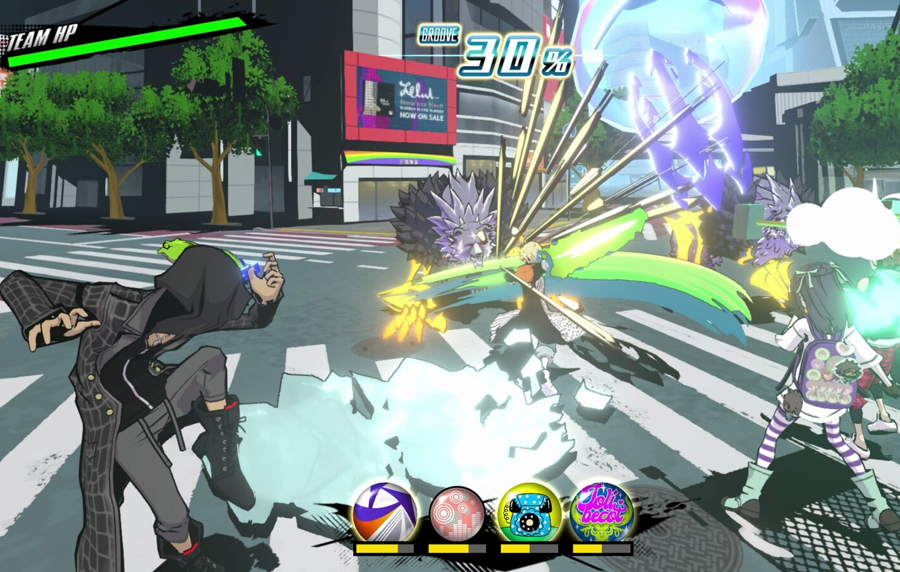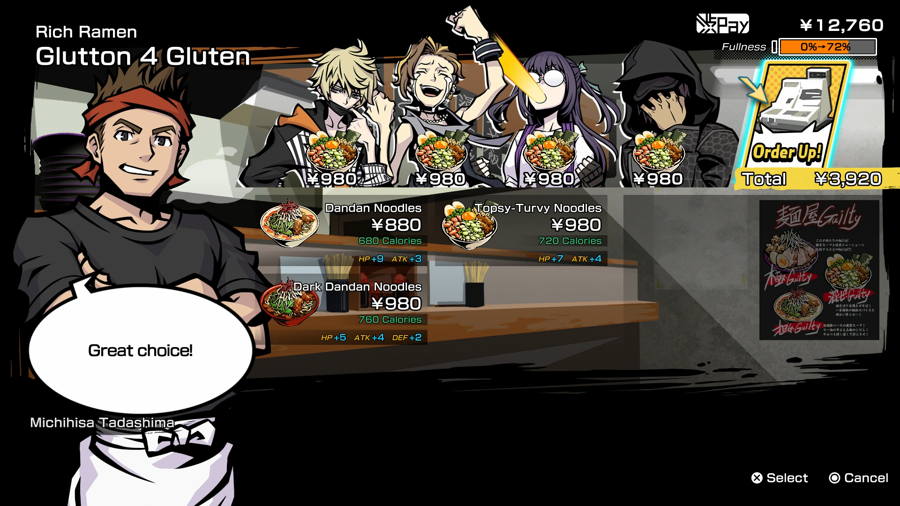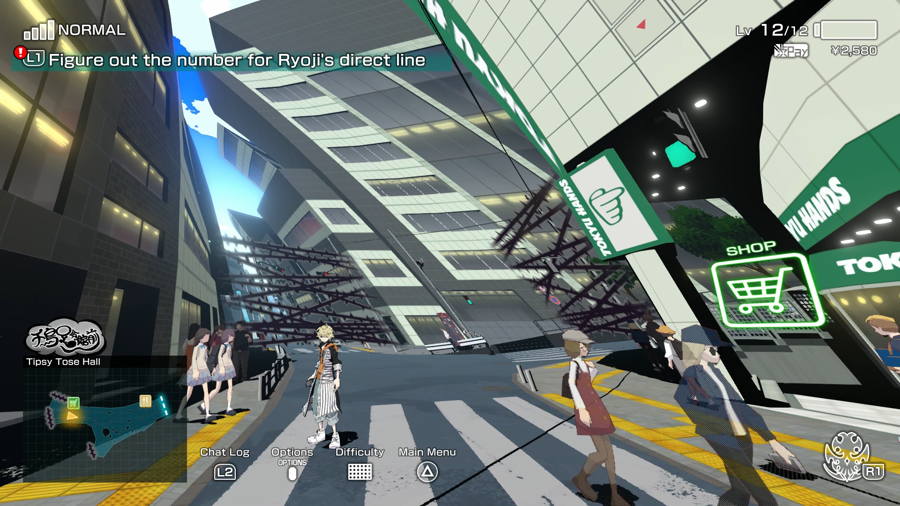NEO: The World Ends With You Review

Official Score
Overall - 80%
80%
NEO: The World Ends With You is a unique and colorful action RPG that packs a fun combat system. While it's certainly not for everyone, those drawn to its stylish vibe will absolutely love it.
Fourteen years after Neku paid a visit to Shibuya on the Nintendo DS, Square Enix’s NEO: The World Ends With You is finally here. Was it worth the wait, or is this locale a bit played out? Check out our review and find out.
NEO: The World Ends With You Review
[line style=’solid’ top=’10’ bottom=’10’ width=’100%’ height=’1′ color=’blue’]I’ll start by saying I didn’t play the first game and didn’t see any recap here. That being said, I was never lost in the story; you’ll just know certain characters from the original title.
NEO: The World Ends With You (TWEWY) starts with an introduction to the main character Rindo. He is hanging out around town when he gets a text from his friend Tosai to meet up. So they meet up, and Tosai gives you a rare Reaper Medal. Rindo and Tosai go to meet up with another person, when Rindo suddenly gets a vision of destruction. Moments later, both Rindo and Tosai are tossed into the Reaper’s Game. The Reaper’s Game is an alternate universe that takes place alongside the current universe.

In this universe, monsters attack the people currently playing the game. Using your badges, you and Tosai fight off these monsters until you get some more allies to join up in the fight. The game’s goal is simple: complete the missions and defeat the big enemies before the other teams to get more points. Winning means you get your wish granted, and losing means you disappear. Oh, and you are told you only have a week to do it; no pressure. In all, the story will easily run you 30-40 hours.
NEO: TWEWY is an action RPG at its core, but the battles are still instanced. When you get into the fight, the combat is real-time, and you control multiple characters at once. Before going into a battle, you equip your badges that count as your attacks. You can only have one badge equipped at first – it might seem limited, but I understand why they did it this way. When fighting, you only use a single button to attack with each character, but you control multiple characters at once.
At first, it is only two of you, and you use simple buttons to attack like square and triangle. Eventually, as you fill out your team, you start to use multiple buttons simultaneously. For instance, my team has an L1, R1, square, and triangle attack pattern. However, L1 and R1 can be charged, so I have to hold those buttons down while building up my combo with my other attacks. My hands had to get used to this type of playstyle, which admittedly took a couple of hours. If I could use multiple buttons per character, it’d be overwhelming. It works extremely well when you get your bearing and find the right combos.

Collecting the badges, you use in combat has become one of the chief driving factors for me in the game. Switching up attacks and seeing what they did in combat was fun. Sure, you have some stinkers, but most of them were enjoyable to use once or twice. The big driver for me was the fact that some of them evolve into new and more powerful attacks. I had one that would toss a rock down on someone, and when it changed, the rock becomes a whole car. They don’t all evolve, but the ones that do will keep you grinding for a while.
Outside of combat, you will solve puzzles for the Reaper’s Game. These involve finding graffiti, getting certain meals or outfits, delivering items, or fighting enemies. Sometimes you have to use your character’s powers as well. For example, Rindo can alter time forwards and backward, to collect items or learn passwords. Tosai can put pictures together in people’s heads to help them remember. Another character literally invades people’s thoughts to get clues or help out on side quests. Each of them has a tiny puzzle attached, so oftentimes it isn’t just a button click.
While doing side quests will net you more cash and EXP, the bigger bonus comes from your social network. Doing side missions nets you Friend Points that you can spend on your network. After helping someone out, they join your network, and you can spend your points on them to get various buffs. When you are close to a new friend, you can also see what you need to do to get them in your network. Some buffs are passive, like converting your cash pins into actual cash, while others provide tactical advantages in combat. It might sound like a minor thing, but it kept me doing the side quests.
There are a few other side things to do as well. Food gives permanent buffs, so keeping your team fed is essential. Each character has a specific kind of food they like as well, so finding their favorite is helpful. There is also an extra stat known as Style. Style points help you unlock perks on new clothes you wear. You start off with something like 20 style points, and some of the clothes require over 100 style to give you an extra benefit. The question early on is do you want to get something with low Style to get the bonus buff, or just take the raw strength and defense.

NEO: TWEWY is a very stylish game; from the art to the music, it oozes character. Some of the design choices are questionable, but it all works for the most part. The weirdest one for me was the camera angle. You can’t move the camera around, and it has a very low angle. While traveling the streets, the buildings bend almost like it is a fisheye camera angle. It isn’t game-breaking, but it isn’t something I’ve seen in other games before.
NEO: The World Ends With You is a unique and colorful action RPG that packs a fun combat system. While it’s certainly not for everyone, those drawn to its stylish vibe will absolutely love it.
[infobox style=’success’ static=’1′]This review of Neo: The World Ends With You was done on the PlayStation 5 using the PlayStation 4 version of the game. A digital code was provided by the publisher.[/infobox][blogger ids=” cat=’honest-game-reviews’ orderby=’date’ order=’desc’ count=’4′ descr=’200′ readmore=’1′ rating=’1′ style=’image_large’ border=’0′ dir=’vertical’]